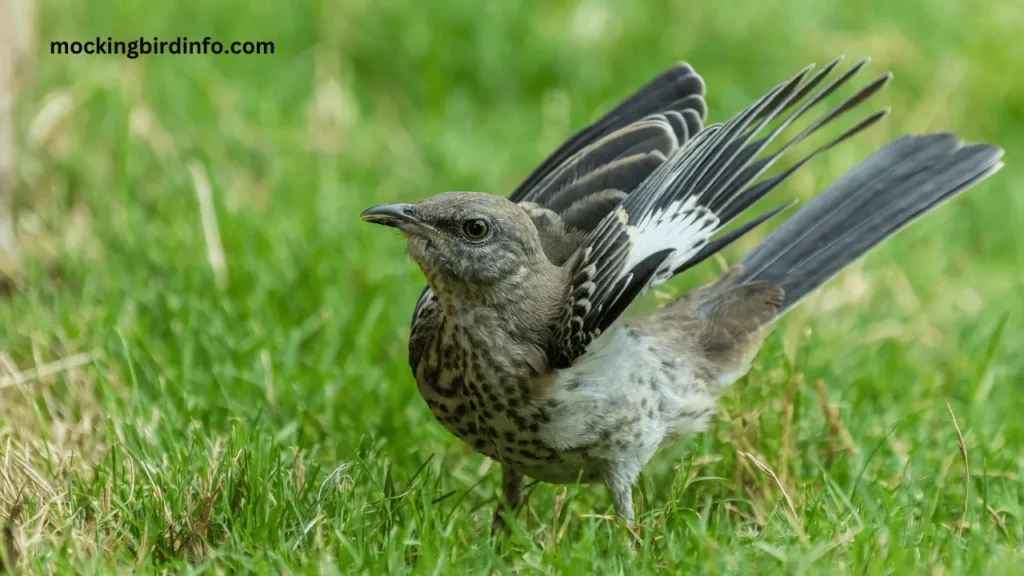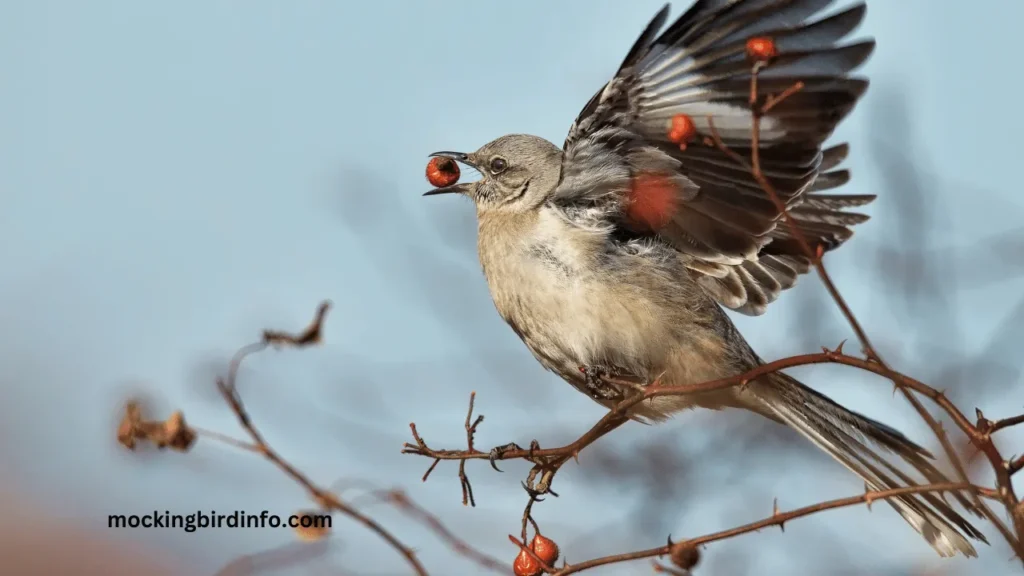Have you ever noticed a mockingbird suddenly spreading its wings wide, as if performing an intricate dance? To the casual observer, this display may seem random, but in the natural world, every movement has a purpose.
From defending territory to communicating intentions, mockingbirds are masters of using their wings to their advantage. This article takes you through the rich and varied reasons why mockingbirds spread their wings, an act that reveals much about their behavior and survival strategies.
Mockingbirds are admired for their intelligence, varied songs, and unique behavioral traits. However, the sight of these birds spreading their wings adds a layer of intrigue, prompting questions about why they exhibit such behaviors.
Is it purely functional, or does it also have social implications? Exploring these questions unveils a fascinating combination of biology, communication, and instinct.
This post will dive into the different reasons why mockingbirds engage in wing-spreading, ranging from territorial battles and mating displays to more practical purposes such as cooling down and drying feathers.
Understanding these behaviors not only enriches our view of mockingbirds but also provides insight into how they have adapted to thrive in their environments.

Contents [hide]
- 1 Territorial Defense
- 2 Mating Rituals
- 3 Thermoregulation
- 4 Other Potential Reasons
- 5 Behavioral Insights and Theories
- 6 Conclusion
- 7 FAQs
- 7.1 1. Why do mockingbirds spread their wings?
- 7.2 2. Do mockingbirds spread their wings to communicate?
- 7.3 3. Is wing-spreading behavior common to all birds?
- 7.4 4. How does wing-spreading help with temperature control?
- 7.5 5. Do mockingbirds spread their wings when they feel threatened?
- 7.6 6. Can wing-spreading be a playful behavior?
Territorial Defense
One of the primary reasons mockingbirds spread their wings is for territorial defense. Mockingbirds are highly protective of their space, especially during the breeding season when resources like food and nesting sites are vital.
When an intruder, such as another bird or even a larger animal, enters their territory, a mockingbird may spread its wings wide to create an imposing visual display. This posturing helps communicate ownership, signaling that the space is already claimed.
This act of spreading wings is not an isolated tactic; it’s often combined with aggressive wing-flapping and sharp, loud calls to amplify the warning. Mockingbirds are known for their relentless dive-bombing and chasing behaviors, which can escalate if the initial wing display fails to deter the intruder.
Such elaborate displays help them avoid unnecessary physical confrontations while maintaining control over their territory.
Additionally, wing-spreading in this context is linked to establishing dominance. In areas where multiple birds compete for space, the mockingbird’s wing display acts as an assertion of its superiority. By effectively projecting strength, the bird minimizes challenges from rivals, ensuring it maintains access to essential resources.
Mating Rituals
Beyond territorial disputes, wing-spreading plays a crucial role in mating rituals. During the breeding season, male mockingbirds showcase their wing-spreading behavior as part of their courtship display.
This dramatic gesture is usually accompanied by singing—a signature trait that highlights their ability to mimic various bird calls and sounds. By spreading their wings and combining it with their vocal prowess, male mockingbirds display both physical fitness and genetic quality to potential mates.
The wings act as a visual signal that enhances the male’s performance. The larger the wings and the more graceful the movements, the more attractive the male becomes to a female. This courtship display is not solely about strength; it’s also a way for the male to convey readiness and willingness to mate.
The synchronized display of wing-spreading and vocal mimicry is believed to demonstrate the bird’s intelligence and adaptability, traits valued during mate selection.
Wing-spreading also aids in pair bonding. Once a pair is established, both partners may occasionally engage in mutual wing displays to reinforce their bond and maintain harmony within their territory. This behavior is essential for long-term partnerships that facilitate successful nesting and raising of chicks.

Thermoregulation
Another essential reason mockingbirds spread their wings involves temperature regulation. Like all birds, mockingbirds must manage their body heat, especially in hotter climates where overheating can be a threat.
By spreading their wings, they increase the surface area exposed to the air, allowing heat to dissipate more efficiently. This behavior is particularly common in the summer or during the middle of the day when temperatures are at their peak.
Sunbathing is an interesting twist on thermoregulation. In cooler weather, mockingbirds may spread their wings and position themselves in direct sunlight, soaking up warmth to maintain their body temperature.
This behavior helps them stay active and agile even when the air temperature drops. The dark feathers on their wings absorb solar radiation, making this technique an effective method for warming up quickly.
After periods of intense physical activity, such as prolonged flight or chasing intruders, mockingbirds often need to cool down rapidly. Wing-spreading helps them release excess heat generated by these exertions, ensuring they don’t overheat and can continue their activities without risk to their health.
Other Potential Reasons
The act of spreading wings isn’t always linked to territorial displays or mating. Mockingbirds also use this behavior for other, less conspicuous reasons. One common explanation is simple stretching and exercise.
Birds, like humans, need to keep their muscles toned and flexible. Wing-spreading can help maintain muscle health, ensuring the bird is ready for quick takeoffs or agile maneuvers when needed.
Drying wet feathers is another reason mockingbirds might spread their wings. Whether they’ve bathed in a puddle or been caught in a rainstorm, wet feathers can impede flight and make a bird more vulnerable to predators.
Spreading their wings in a sunny spot speeds up the drying process, restoring their flight capability and maintaining the insulation properties of their feathers.
In some cases, wing-spreading can be part of a startle response. If a mockingbird perceives a sudden threat, it may spread its wings quickly to make itself appear larger and more intimidating. This tactic can deter potential predators or competitors, giving the bird a chance to escape or fight if needed.
Behavioral Insights and Theories
Young mockingbirds often engage in mimicry and practice behaviors, including wing-spreading, to learn the social and survival cues they will need as adults. This behavior is sometimes seen when juveniles are alone or when they are interacting with siblings, providing a safe way to practice essential movements before they need them in real situations.
Research has also suggested that neurological and hormonal factors might trigger wing-spreading in certain contexts. The behavior could be instinctive, embedded in the bird’s repertoire as a response to particular environmental stimuli, such as changes in light or temperature.
Understanding these triggers could offer new insights into how mockingbirds and other birds adapt their behaviors to various conditions.
Conclusion
The sight of a mockingbird spreading its wings is not just an arbitrary act; it’s a multifaceted behavior with significant implications for their survival and social interactions.
From defending territory and attracting mates to cooling down and drying feathers, this behavior serves as a versatile tool that reflects the intelligence and adaptability of these birds.
Future research could further illuminate how wing-spreading connects to hormonal and environmental cues, enhancing our appreciation of this seemingly simple behavior. Observing and understanding such actions reinforces the importance of protecting habitats where mockingbirds and other bird species thrive.
By conserving their environment, we help ensure that these fascinating wing displays continue to grace our parks and neighborhoods for generations to come.
Conservation efforts play a crucial role in maintaining the ecosystems that support mockingbirds. As we strive to preserve their habitats, we also protect the behaviors and rituals that are integral to their lives.
The humble act of a mockingbird spreading its wings is a reminder of nature’s complexity and the beauty hidden in the details of everyday life.
FAQs
1. Why do mockingbirds spread their wings?
Mockingbirds spread their wings for territorial defense, courtship displays, thermoregulation, and other practical reasons like stretching and drying feathers.
2. Do mockingbirds spread their wings to communicate?
Yes, they use wing-spreading and flapping as non-verbal communication tools during territorial disputes and courtship.
3. Is wing-spreading behavior common to all birds?
While many birds spread their wings, mockingbirds are particularly noted for this behavior due to its varied purposes and elaborate use in social and practical contexts.
4. How does wing-spreading help with temperature control?
By extending their wings, mockingbirds can dissipate excess body heat and help cool down after physical activity.
5. Do mockingbirds spread their wings when they feel threatened?
Yes, wing-spreading can be a startle response to sudden threats, making the bird appear larger and more intimidating.
6. Can wing-spreading be a playful behavior?
Sometimes, especially in young mockingbirds, wing-spreading may be part of practice or play as they learn adult behaviors.








